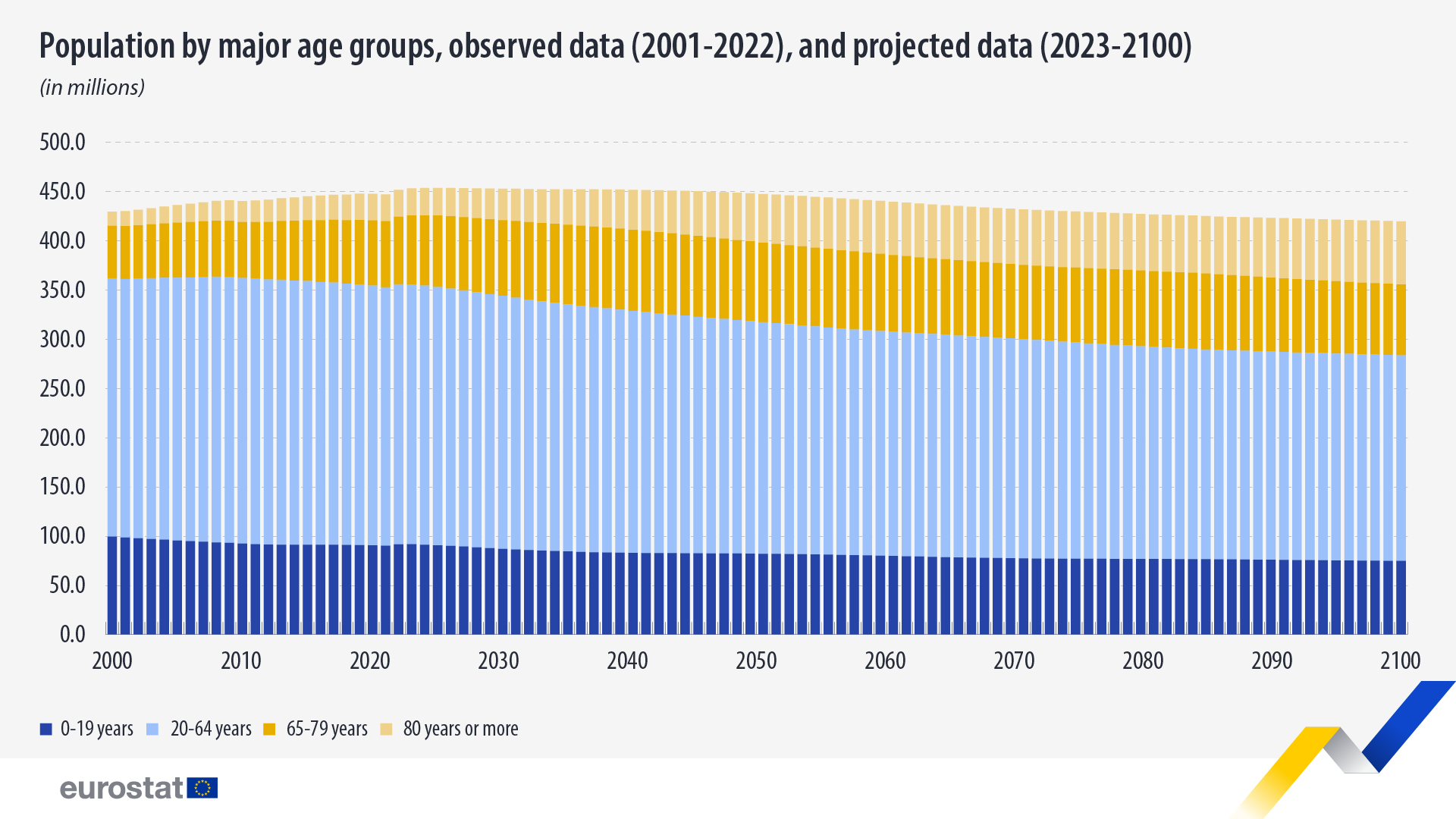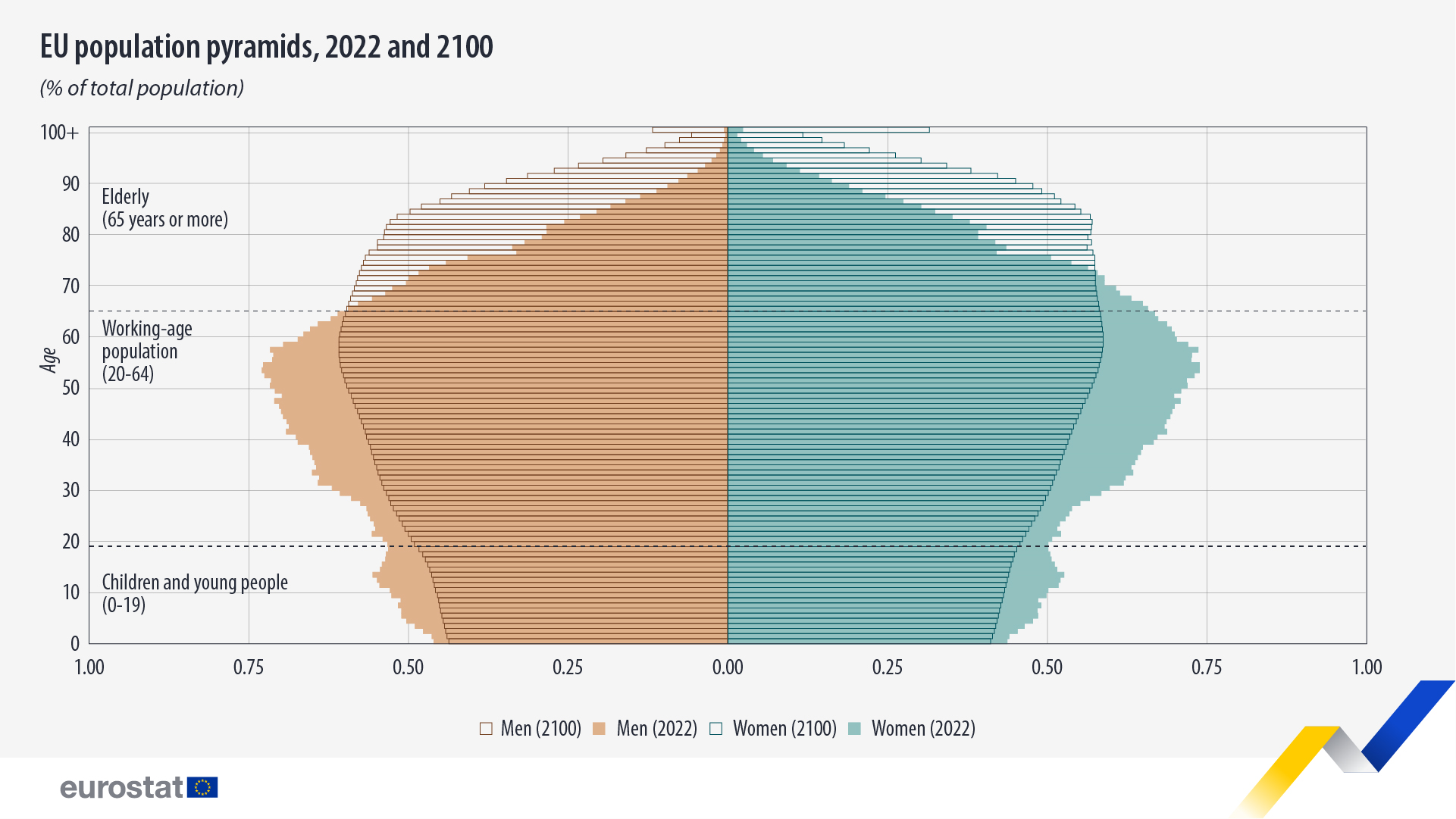Sat 01 Apr 2023:
According to the latest population projections issued by Eurostat, the EU’s population will decrease by 6% between 1 January 2022 and 1 January 2100, equivalent to 27.3 million fewer people.
After a decrease in 2020 and 2021 due to the impacts of the COVID-19 pandemic, the population of the EU started recovering during the course of 2022.
As a consequence of the mass influx of refugees from Ukraine into the EU as a result of Russia’s aggression against Ukraine, the population is estimated to have reached 451 million persons on 1 January 2023. Furthermore, the EU’s population is projected to peak at 453 million people in 2026, before decreasing to a projected level of 420 million in 2100.
This information comes from the population projections published by Eurostat today. The results are based on assumptions of partial convergence of EU countries’ fertility, mortality and migration patterns.

Source datasets: demo_pjan (observed datamigr_pop1ctz) and proj_23np (projected data)
The proportion of children and young people (aged 0 to 19 years) in the total population is projected to decrease from 20% at the beginning of 2022 to 18% by 2100. Similarly, the share of working-age people (aged 20-64 years) in the EU’s total population is projected to decrease from 59% in 2022 to 50% in 2100.
In contrast, the share of older age groups (65 years or more) in the EU’s total population is projected to increase. The share of those aged between 65-79 is expected to rise by 2 percentage points (pp) from 15% at the beginning of 2022 to 17% in 2100, while the share of those aged 80 years or more is foreseen to more than double, from 6% to 15%.
EU’s Population Pyramid
In 2022, the EU’s population pyramid already shows the shape associated with long life expectancies, low death rates and low birth rates: the highest shares of the population are made up of working-age people above 50, while the shares of young people below 20 are noticeably smaller.

Source dataset: proj_23np
The 2100 pyramid clearly shows development towards a shrinking and ageing society: decreases in the shares of children and young people below 20 and those at working age are only partially offset by increases in the shares of those aged 65 or more. Contrary to 2022, the pyramid does not start contracting after the age of 55, but remains relatively stable until around 85 years.
At the top of the projected pyramid for the year 2100, the age group 100 years or more becomes wider, with women aged 100 or more being projected to represent 0.3% of the total population in 2100 against 0.02% in 2022.
NEWS AGENCIES
___________________________________________________________________________________________________________________________________
FOLLOW INDEPENDENT PRESS:
TWITTER (CLICK HERE)
https://twitter.com/IpIndependent
FACEBOOK (CLICK HERE)
https://web.facebook.com/ipindependent
Think your friends would be interested? Share this story!





